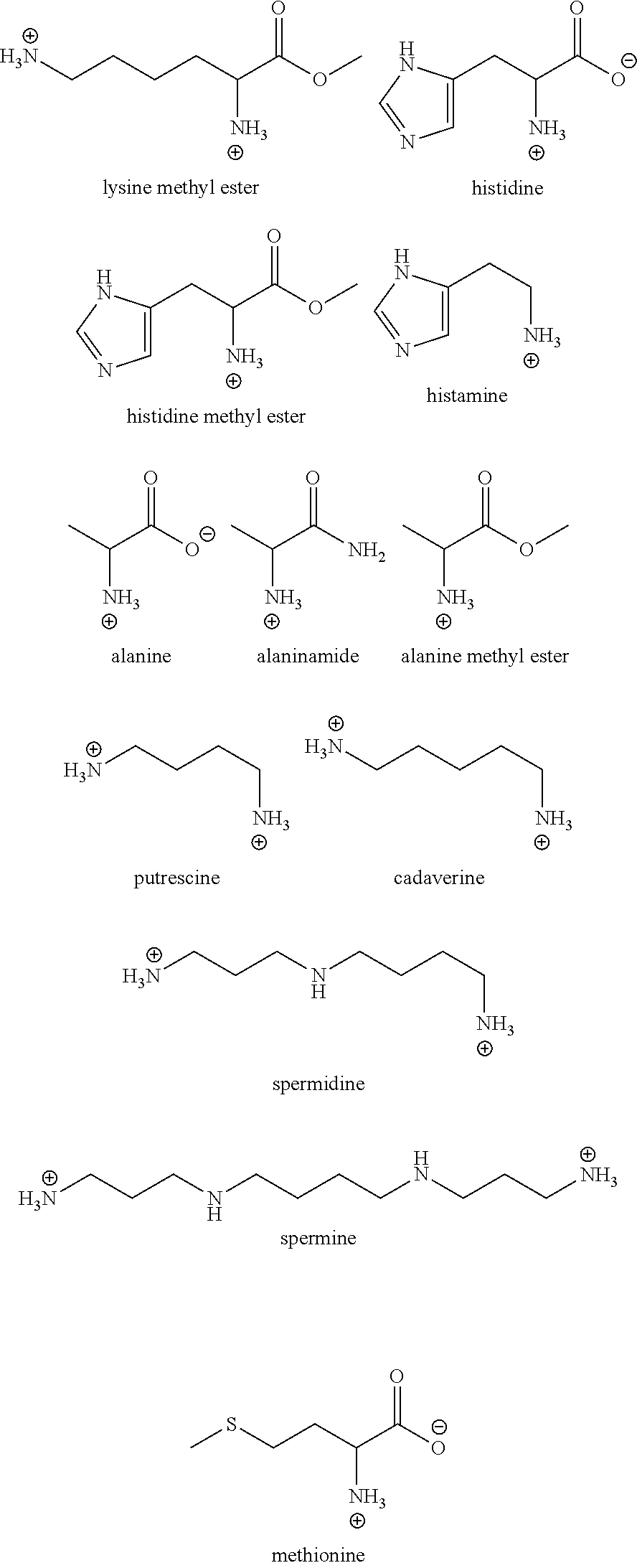Compositions and methods useful for reducing the viscosity of protein-containing formulations
a technology of protein-containing formulations and compositions, applied in the direction of immunoglobulins, peptides, antibody medical ingredients, etc., can solve the problems of physical and chemical stability of proteins, difficulty in manufacturing, storage and delivery of protein formulations, and difficulty in manipulating during further processing, so as to reduce the viscosity of those formulations
- Summary
- Abstract
- Description
- Claims
- Application Information
AI Technical Summary
Benefits of technology
Problems solved by technology
Method used
Image
Examples
example 1
Investigation of Protein Viscosity in Solution
[0138]This example illustrates measurements of viscosity of various antibody-containing formulations.
[0139]The viscosity of various aqueous formulations of an anti-CD4 monoclonal antibody in solution was evaluated. Specifically, in this study, buffered solutions containing various concentrations of anti-CD4 monoclonal antibody (20 mM Histidine-succinate, pH 6.3) were prepared and the viscosity of the resulting solution was determined. In this regard, viscosity was measured using a standard cone-and-plate rheometer (TA Instruments AR-G2 stress rheometer using a 20 mm diameter, 1 degree cone, and water solvent trap) at a temperature of 25° C. and a shear rate of 1000 l / s. Upon loading, each sample was allowed to equilibrate for 2 minutes at 25° C. prior to the start of data collection. Data was collected for a minimum of 2 minutes to ensure steady state was reached. Solutions were prepared by dialysis and / or addition of the dry excipient i...
example 2
Investigation of the Effect of Arginine on the Viscosity of an Aqueous Antibody-Containing Formulation
[0140]This example illustrates how arginine-HCl and arginine succinate (arginine-S) effect the viscosity of an aqueous monoclonal antibody-containing formulation.
[0141]The viscosity-reducing effect of arginine-HCl and arginine succinate in an aqueous formulation of an anti-CD4 monoclonal antibody in solution was evaluated. Specifically, in this study, buffered solutions containing various concentrations of anti-CD4 monoclonal antibody (20 mM Histidine-succinate, pH 6.3) were prepared in combination with various concentrations of free arginine and the viscosity of the resulting solution was determined as described above. The results of these analyses are shown in Table II below.
TABLE IIAbsoluteViscosityAntibody Concentration (mg / ml)Excipient(cP)243.3 mg / ml anti-CD4 antibody30 mM arginine-HCl128.8 cP 228.0 mg / ml anti-CD4 antibody200 mM arginine-S34.4 cP228.0 mg / ml anti-CD4 antibody410...
example 3
Investigation of the Effect of Various Arginine Derivatives, Precursors, and Structural Analogs on the Viscosity of an Aqueous Antibody-Containing Formulation
[0143]This example illustrates how various arginine derivatives, precursors and structural analogs effect the viscosity of an aqueous monoclonal antibody-containing formulation.
[0144]Given that the data in Example 2 demonstrated that arginine-HCl and arginine succinate have a beneficial effect on reducing the viscosity of high concentration antibody-containing formulations, we next sought to determine the effect that various different arginine derivatives, precursors and structural analogs would have on such protein-containing formulations. Specifically, in the following studies, buffered solutions containing various concentrations of anti-CD4 monoclonal antibody (20 mM Histidine-succinate, pH 6.3) were prepared in combination with various concentrations of different derivatives, precursors or analogs of arginine and the viscos...
PUM
| Property | Measurement | Unit |
|---|---|---|
| concentration | aaaaa | aaaaa |
| viscosity | aaaaa | aaaaa |
| viscosity | aaaaa | aaaaa |
Abstract
Description
Claims
Application Information
 Login to View More
Login to View More - R&D
- Intellectual Property
- Life Sciences
- Materials
- Tech Scout
- Unparalleled Data Quality
- Higher Quality Content
- 60% Fewer Hallucinations
Browse by: Latest US Patents, China's latest patents, Technical Efficacy Thesaurus, Application Domain, Technology Topic, Popular Technical Reports.
© 2025 PatSnap. All rights reserved.Legal|Privacy policy|Modern Slavery Act Transparency Statement|Sitemap|About US| Contact US: help@patsnap.com



